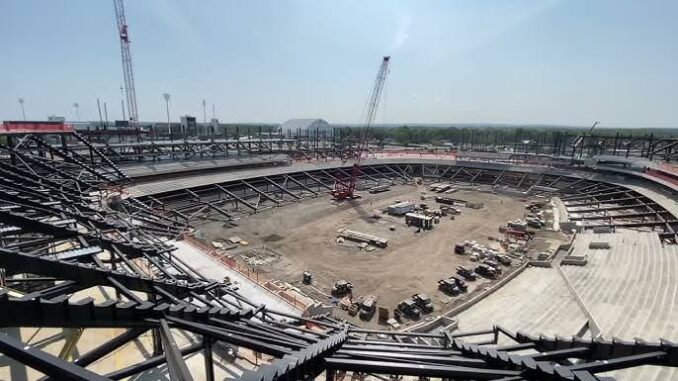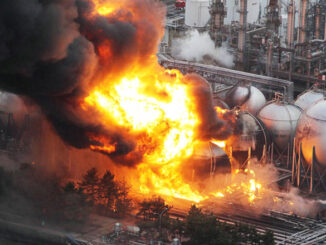
Good News: Buffalo Bills’ New Stadium Costs Reach $2.1 Billion…
Buffalo Bills’ New Stadium Costs Reach $2.1 Billion: A Step Toward a Modern Future
The Buffalo Bills’ new stadium project has officially reached a milestone cost of $2.1 billion, signaling a significant step toward securing the team’s future in Buffalo and ushering in a new era for both the franchise and the city. With the rising costs of construction and the need for a state-of-the-art facility to compete with modern NFL venues, this ambitious project has been the subject of much debate, but it is ultimately seen as a necessary investment in both the team’s and Buffalo’s long-term success.
The new stadium, which is set to replace the aging Highmark Stadium (formerly Ralph Wilson Stadium), is a crucial component of the Bills’ vision for the future. For years, the team has struggled with outdated facilities that were no longer in line with the NFL’s evolving demands. The move to a new, more modern stadium, in a location still yet to be fully detailed, is aimed at boosting fan experience, increasing revenues, and enhancing the team’s ability to remain competitive.
Why the $2.1 Billion Price Tag
The cost of the stadium has ballooned to an estimated $2.1 billion, a figure that reflects the current inflationary pressures in the construction industry, the complexity of building a world-class facility, and the need to modernize the amenities to accommodate a new generation of fans. The Bills’ ownership, led by Terry and Kim Pegula, has made clear that this project is not just about constructing a building but about creating a home for the Bills that will continue to draw fans for decades to come.
Key elements of the stadium include advanced technology for fan engagement, larger luxury suites, improved seating configurations, and enhanced amenities like expanded concourses and state-of-the-art video boards. These features are designed to provide a more comfortable and immersive experience for spectators. In addition, the stadium will likely serve as a venue for other events such as concerts, college football games, and possibly even major sporting events, further increasing its value to the region.
Public vs. Private Funding Debate
As with many large stadium projects, the issue of public vs. private funding has been a hot topic of debate. The Buffalo Bills’ ownership has pledged to contribute a significant portion of the total cost, but a substantial portion of the funding will come from state and local governments. The state of New York agreed to provide a $600 million grant, while Erie County has committed to contributing to the stadium’s construction, making this a public-private partnership that has drawn scrutiny from taxpayers and critics concerned about the value of such an investment.
However, proponents argue that the long-term benefits to the local economy, including job creation, increased tourism, and enhanced team performance, justify the public funding. The Bills have estimated that the new stadium will generate tens of millions in economic activity every year, helping to revitalize the surrounding area, create jobs, and attract visitors to Buffalo year-round.
The Long-Term Impact
The $2.1 billion stadium is more than just a home for the Buffalo Bills; it is a symbol of the city’s determination to remain a viable sports market in the competitive world of professional football. For the Bills, a modern facility will help attract high-profile players, retain talent, and ensure that the team remains a valuable asset in the NFL.
For Buffalo, the project could provide an economic boon, especially given the city’s historical reliance on sports and tourism. As one of the few NFL teams that still plays in a city without an established entertainment hub, the new stadium will help Buffalo remain competitive in the sports market while strengthening its identity as a football town.
In conclusion, while the $2.1 billion price tag for the new Buffalo Bills stadium is undoubtedly a significant sum, it reflects the reality of building a world-class facility in today’s economic climate. The project, when completed, will not only provide the Bills with a modern home to match their growing aspirations but will also provide Buffalo with the infrastructure it needs to thrive in the years to come. The investment is one that promises to pay off both on and off the field, securing the Bills’ place in Buffalo for generations to come.



Be the first to comment